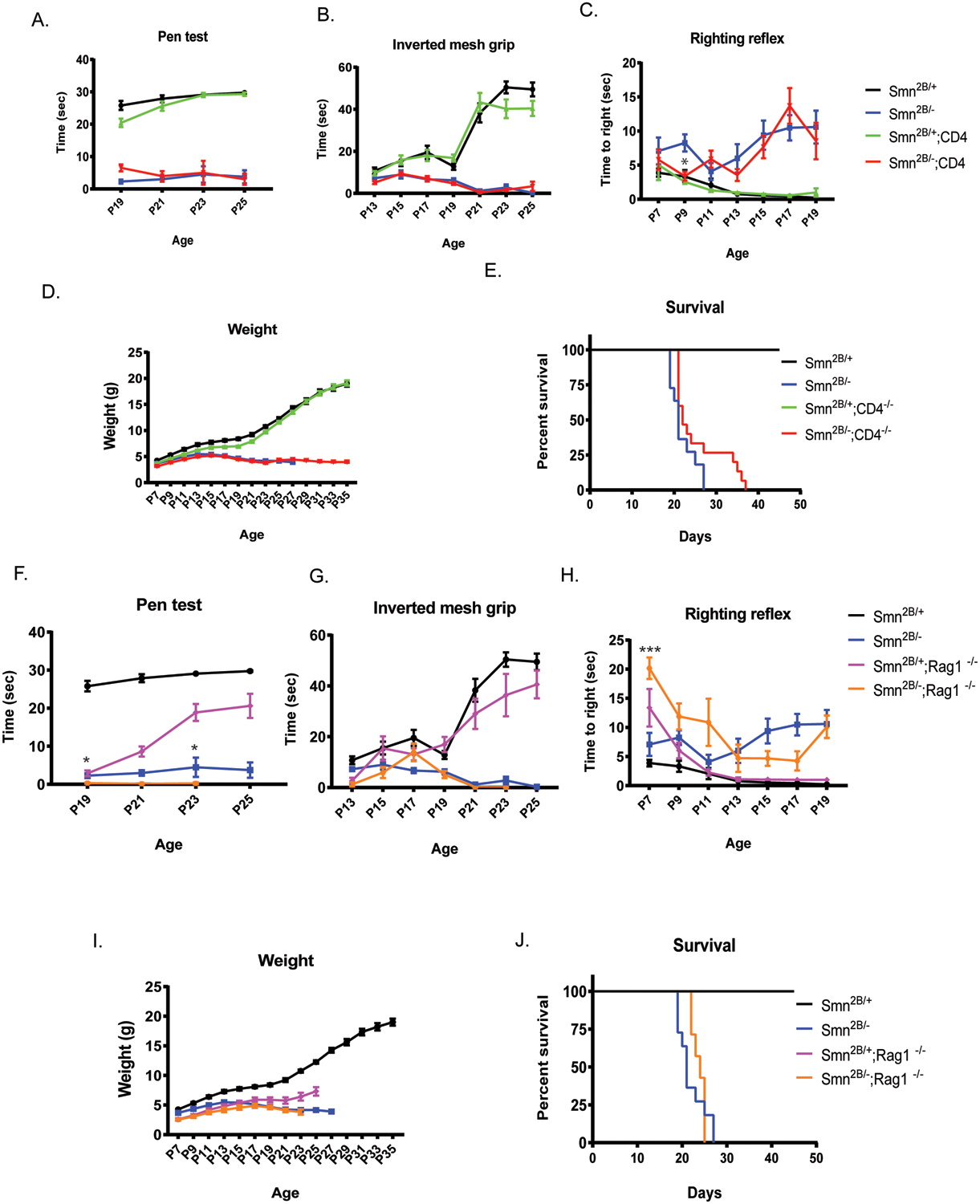Figure 2. Depleting mature lymphocytes does not improve survival and motor function of Smn2B/− mice.

A. Inverted mesh grip (starting at PND13), B. pen test (starting at PND19), and C. righting reflex (starting at PND7) motor function tests were assessed in Smn2B/+ (black), Smn2B/− (blue), Smn2B/+;CD4/− (green), Smn2B/−,CD4−/−(red) mice (n≥11/group) D. Mice were weighed to assess changes in body weight. E. Kaplan-Meier survival analysis of Smn2B/+ (black), Smn2B/− (blue), Smn2B/+;CD4/− (green), Smn2B/−,CD4−/−(red). Motor function was assessed in Smn2B/+ (black), Smn2B/− (blue), Smn2B/+;Rag1−/− (pink), Smn2B/− ;Rag1−/− (yellow) mice (n≥7/group) by F. inverted mesh grip (starting at PND13), G. pen test (starting at PND19), and H. Righting reflex (starting at PND7). I. SMA mice were weighed every other day to assess changes in body weight. J. Kaplan-Meier survival analysis of assessed. Survival curves were analyzed using a log-rank (Mantel–Cox) test. A P value <0.05 was considered statistically significant. Significance of behavior data was determined by two-way ANOVA. Mantel-Cox and Gehan Breslow-Wilcoxon analyses were performed to determine significance between groups for all significant main effects and interactions. The same group for Smn2B/+ and Smn2B/− control animal were used to measure the effect of CD4 and Rag1 KO on the Smn2B/+ mutant and do not represent two different set of controls.
